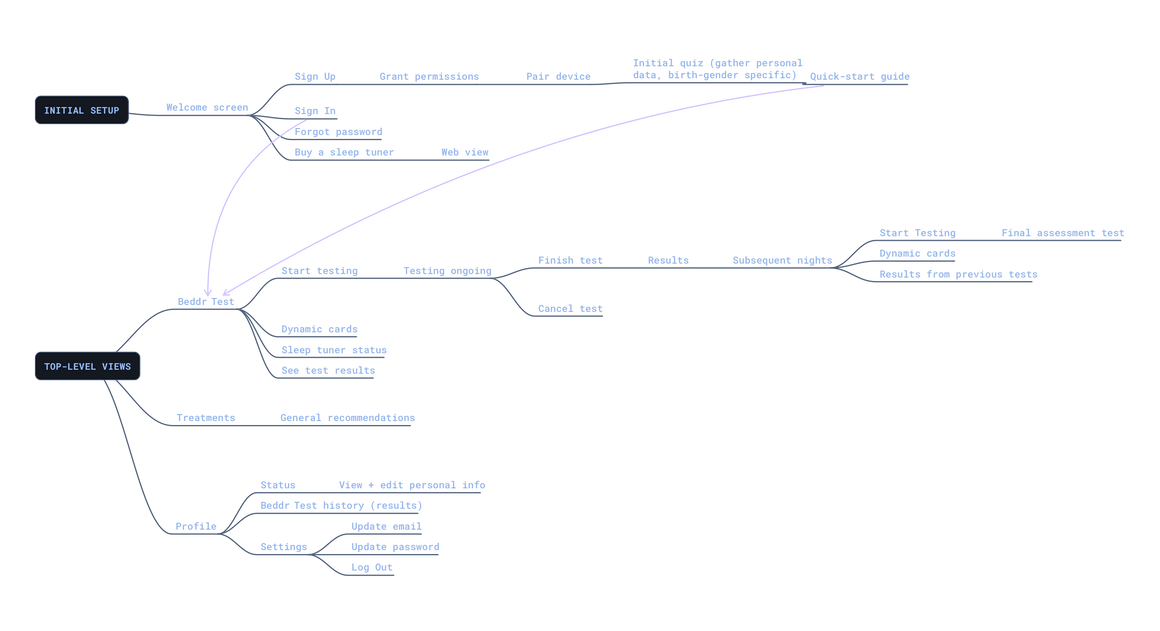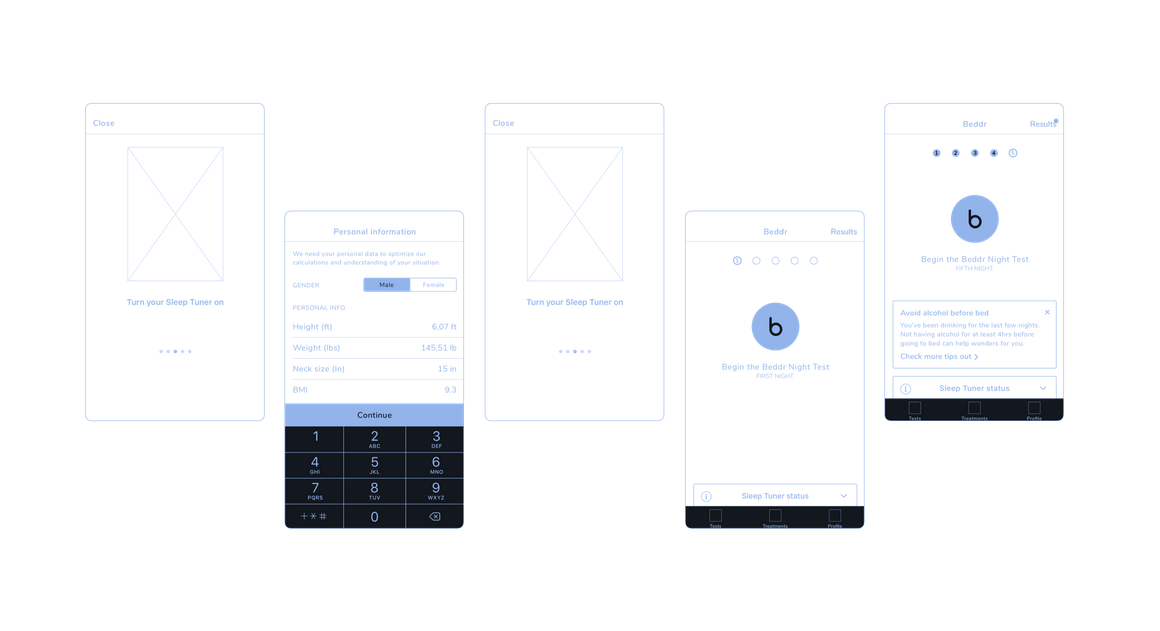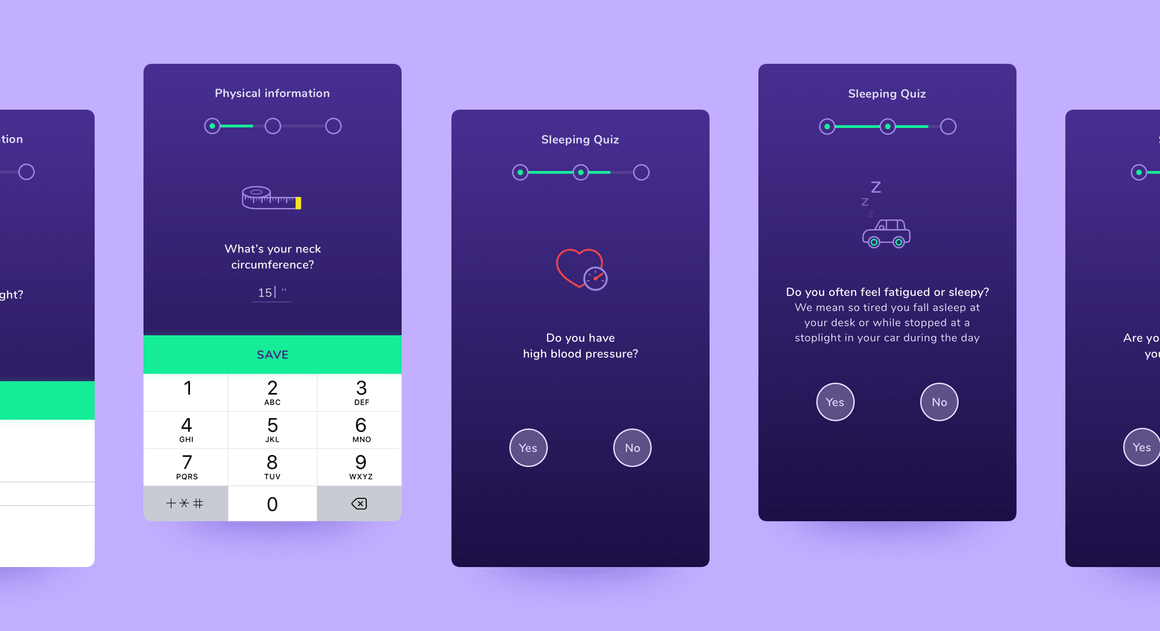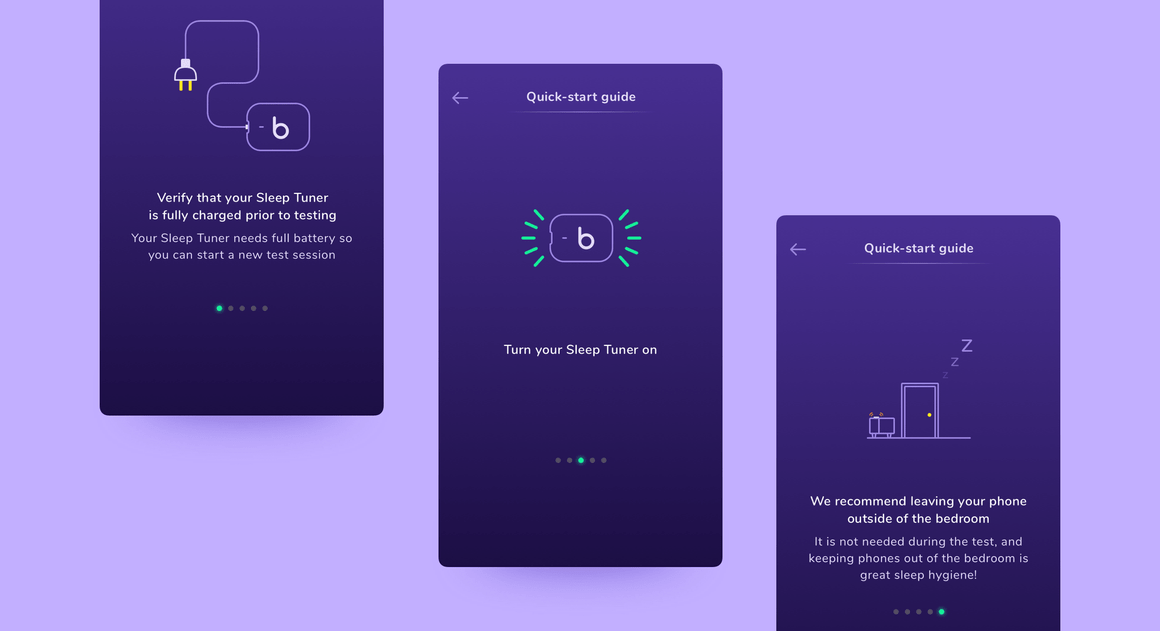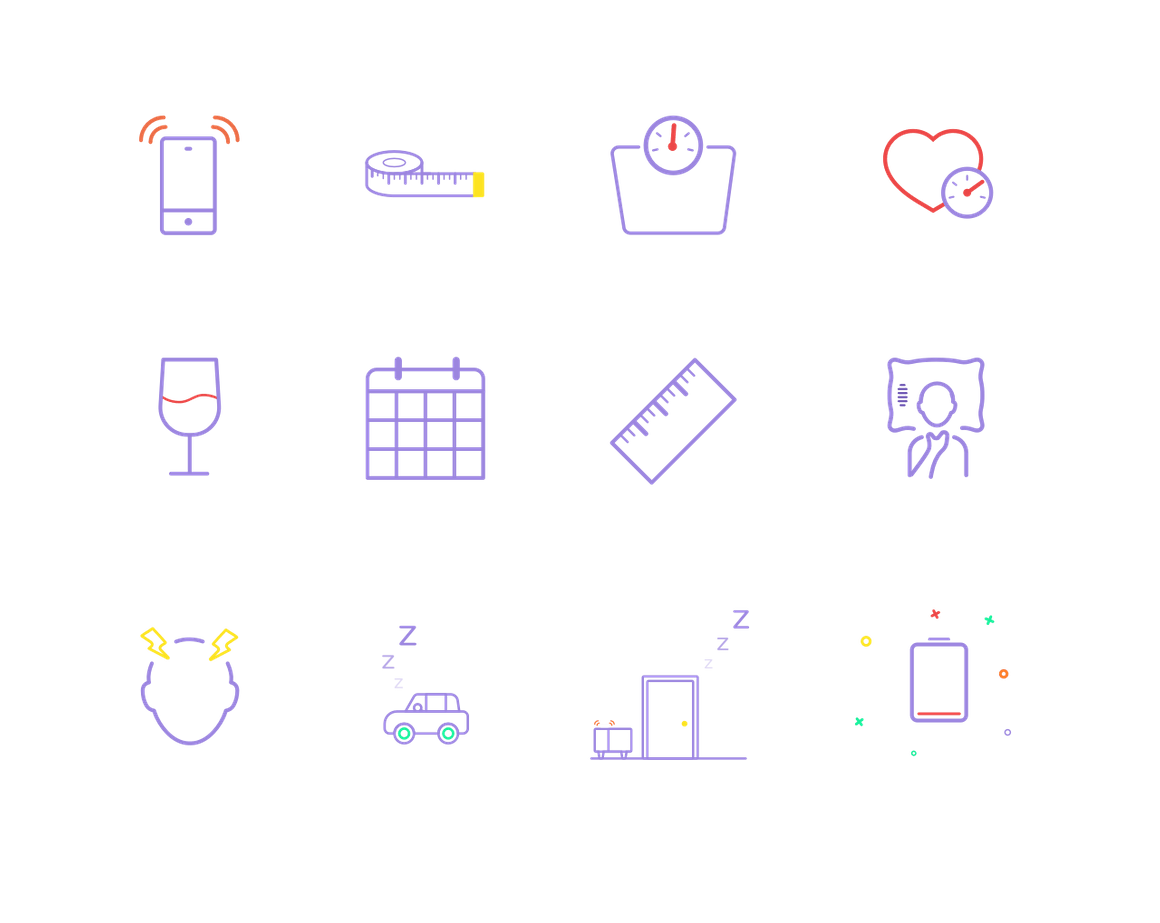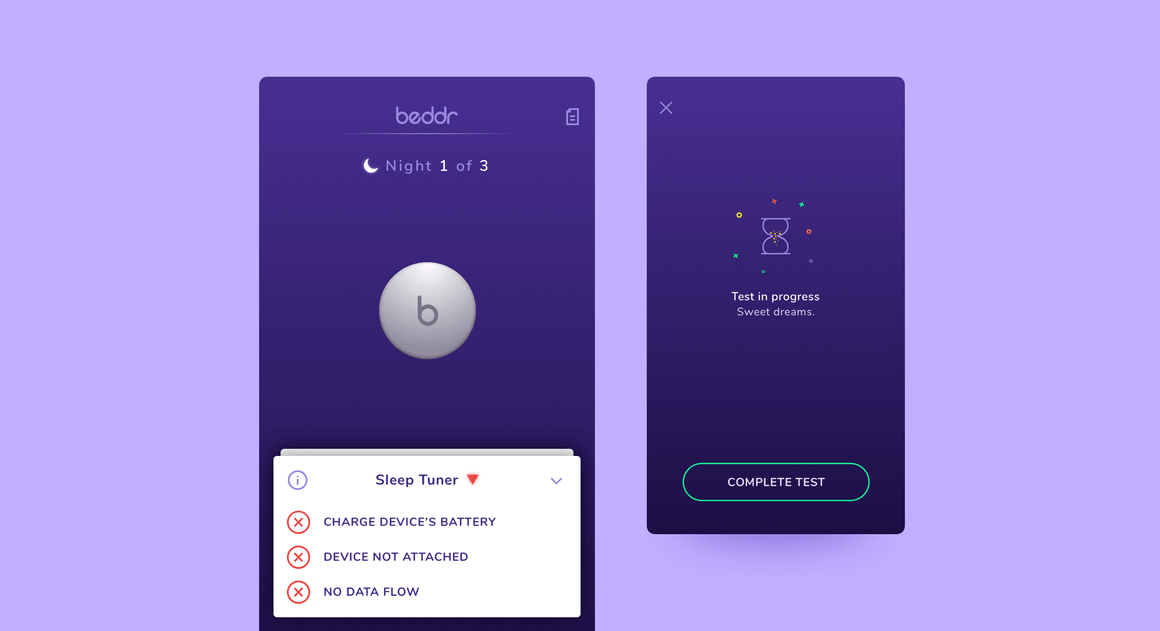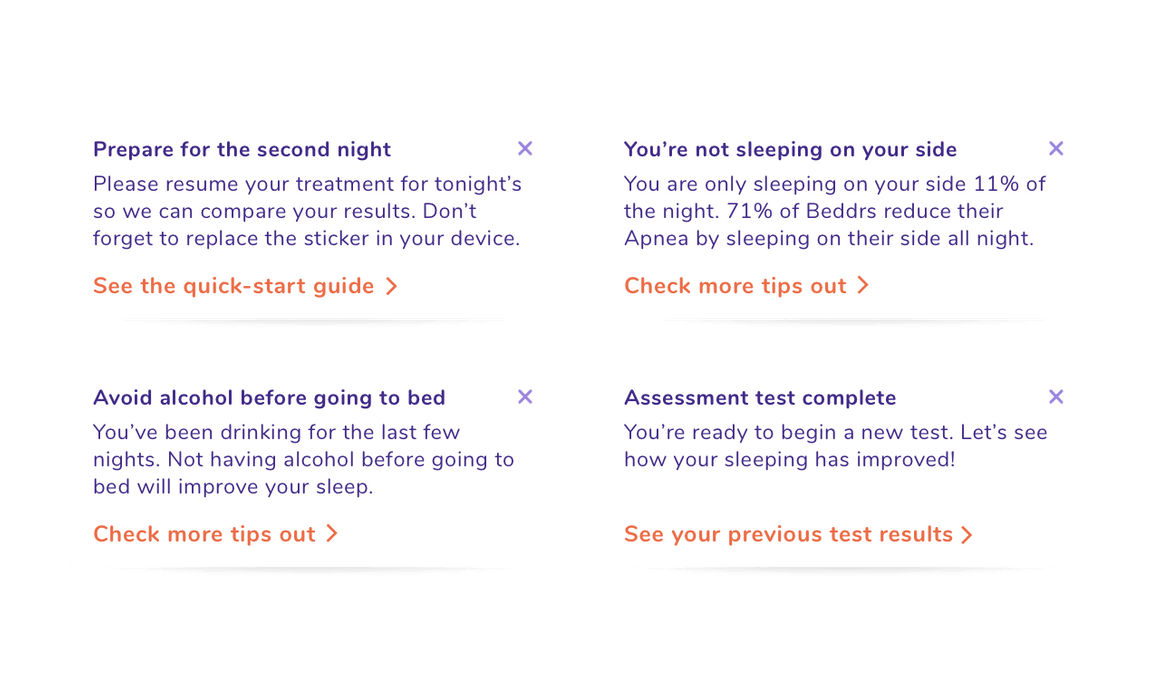Role
UI/UX Design
Platform
iOS
Year
2017
Beddr — Home screen
Beddr's smart device is called a Sleep Tuner, and users put one on their forehead before going to sleep. By means of a companion app, a user would get a full report of different bits of data gathered while they sleep, such as how many “low-oxygen” events they went through at night, or what was the longest time they spent with little to no oxygen while asleep.
The results from these tests would help users learn about their condition and offer suggestions for potential treatments to look into. This was aided in part by using a friendly, easy-going visual style, as well as a “little-to-no-input” approach on the user’s part.
A rough look at the Beddr user journey within the app
Beddr — Assorted wireframes
The initial onboarding consists of pairing the Sleep Tuner device with the user’s phone, as well as answering a small questionnaire with a variety of questions related to their physical information. These questions will be fundamental for the initial assessment test, as some physiological traits can influence the conducted analysis.
Beddr — Assorted screens from the initial questionnaire
Beddr — Quick-start guide
The general aesthetic is meant to give the app a modern feel. Approachable, and also appropriate for night use. Sometimes, even a bit cheeky.
Indeed, our main objective was to create something friendly, and not condescending or patronising; as well as to avoid being overly dramatic due to apnea being a sensitive topic. We didn’t want to make people feel uncomfortable.
Beddr — Testing!
Sleep Journal — Assorted questions
The main screen also contains a supporting, dynamic card that displays different content to the user based on their test results. The objective of this is making the app feel truly tailor-made and relevant to each user’s experience.
For example, if I mentioned in my sleep journal that I had 3 glasses of wine before going to bed, the card will change to remind me to avoid drinking before going to bed the following night.
Some of the conversations had with the client dealt with how to present the results a test. Of course, we considered using some graphs, as that can be fairly visually appealing. In the end, we opted for something much more straightforward and direct.
By that I mean written language, and a small number of graphic elements to support the results instead of charts and graphs — in order to help reducing reading errors and misunderstandings.
Test results

